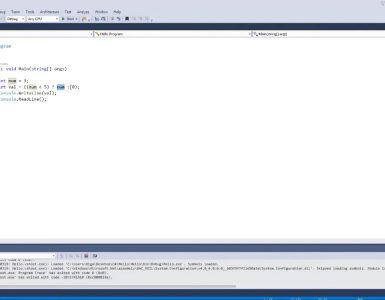The world of programming and coding is a fascinating realm where innovation and problem-solving converge. However, amidst the allure of creating software and shaping technology, there is a prevailing sentiment that coding can be boring. In this article, we delve into the underlying factors contributing to this perception, unraveling why programming can become a monotonous endeavor. From the repetitive nature of tasks to the inherent challenges of debugging, the limited human interaction inherent in coding, and the delayed sense of progress, we explore the complexities that underlie this seemingly mundane but highly impactful craft. By understanding these factors and adopting strategies to combat boredom, programmers can reignite their passion and find renewed excitement in their coding journey.
The Repetitive Nature of Programming:
One significant aspect that can make coding feel tedious is the repetitive nature of certain programming tasks. Writing code often involves performing similar actions repeatedly, such as iterating over data structures or implementing common algorithms. This repetition can gradually erode the initial enthusiasm for coding, as it may seem like a never-ending cycle of mundane actions.
To combat the monotony of repetitive tasks, programmers can employ several strategies. One approach is to modularize code by creating reusable functions or libraries. This not only reduces duplication but also allows for more focused and efficient coding. By encapsulating repetitive actions into functions, programmers can save time and effort in writing the same lines of code repeatedly.
Another technique is to leverage the power of code generation tools or templates. These tools enable programmers to automate the generation of boilerplate code or common patterns, reducing the need for manual repetition. Code generation can be particularly useful for tasks like creating database models, generating API endpoints, or setting up project structures. By automating repetitive code generation, programmers can free up valuable time to focus on more challenging and intellectually stimulating aspects of their work.
Furthermore, adopting design patterns and frameworks can also alleviate the burden of repetitive coding tasks. Design patterns provide proven solutions to common coding problems, allowing programmers to leverage existing patterns rather than reinventing the wheel. Similarly, frameworks offer pre-built components and abstractions that handle common functionalities, reducing the need to write repetitive code from scratch. By leveraging design patterns and frameworks, programmers can streamline their development process, increase code reusability, and ultimately reduce the monotony associated with repetitive coding tasks.
It’s worth noting that while repetitive tasks are an inherent part of programming, they are not exclusive to coding alone. Many industries and professions involve repetitive actions. The key to overcoming the boredom lies in finding ways to optimize and streamline these repetitive tasks, enabling programmers to focus on the more exciting and intellectually stimulating aspects of problem-solving.
For example, let’s consider a scenario where a programmer is building a web application that requires authentication. The repetitive task of creating login functionality, including validation, database operations, and session management, can be streamlined using frameworks like Django or Ruby on Rails. These frameworks provide built-in authentication modules that handle the repetitive aspects, allowing programmers to focus on customizing and extending the functionality to meet their specific requirements. By leveraging such frameworks, programmers can significantly reduce the amount of repetitive code they need to write and maintain.
In addition to optimizing repetitive tasks, it’s crucial for programmers to stay curious and continuously seek opportunities for growth and learning. Exploring new technologies, programming languages, or paradigms can introduce fresh challenges and prevent coding from becoming monotonous. By expanding their skill set and exploring different domains of programming, programmers can find new avenues for creativity and problem-solving, injecting excitement and variety into their coding journey.
In conclusion, while the repetitive nature of programming tasks can contribute to a sense of boredom, there are various strategies to combat this monotony. By modularizing code, leveraging code generation tools and templates, adopting design patterns and frameworks, and staying curious and open to learning, programmers can break free from the cycle of repetitive tasks and find renewed enthusiasm and joy in their coding endeavors. Embracing these approaches allows programmers to spend less time on mundane actions and more time on the aspects of coding that truly ignite their passion and creativity.

Bugs: The Perennial Challenges:
Another factor contributing to the perceived boredom in coding is the persistent presence of bugs. Programming involves intricate logic, syntax, and dependencies, making it prone to errors. Debugging, the process of identifying and resolving bugs, can be time-consuming and mentally draining. The iterative cycle of writing code, encountering bugs, and fixing them can create a sense of monotony and frustration.
One of the reasons bugs can be frustrating is their elusive nature. They can appear at any stage of the development process and can be challenging to reproduce or pinpoint. The search for bugs often involves carefully analyzing code, examining error messages, and using debugging tools to trace the flow of execution.
To tackle this challenge, adopting a systematic approach to debugging is crucial. One effective strategy is to divide and conquer. By isolating specific sections of code or narrowing down the problem’s scope, programmers can minimize the search space and focus their efforts on the most likely sources of the bug. This approach not only helps save time but also prevents getting overwhelmed by the entire codebase.
Logging and error handling are also invaluable techniques in bug hunting. Incorporating robust logging mechanisms allows programmers to gather information about the program’s behavior and track down potential issues more effectively. By strategically placing logging statements at critical points in the code, programmers can gain insights into the flow of execution and identify areas where unexpected behavior or errors occur.
Unit testing is another powerful tool in bug detection. Writing automated tests for individual units of code can help identify issues early on and prevent regressions. By systematically testing various scenarios and edge cases, programmers can catch bugs before they manifest in larger, integrated systems.
Collaboration can play a significant role in bug hunting as well. Engaging in code reviews or seeking assistance from fellow programmers can provide fresh perspectives and uncover potential issues that may have been overlooked. Sometimes, a second pair of eyes can spot a simple mistake or suggest alternative approaches to solving a problem.
Moreover, maintaining a positive mindset is essential when dealing with bugs. Instead of viewing them as annoyances, programmers can approach bugs as opportunities for growth and learning. Each bug encountered presents a chance to enhance problem-solving skills, deepen understanding of the codebase, and improve code quality. By reframing the perspective, programmers can turn the debugging process into an engaging challenge rather than a monotonous chore.
It’s worth noting that while bugs are an inherent part of coding, adopting preventive measures can significantly reduce their occurrence. Writing clean, well-structured code, adhering to coding best practices, and performing thorough testing can help minimize the introduction of bugs in the first place. By following rigorous development practices, programmers can proactively address potential issues and alleviate the need for extensive debugging.
In conclusion, while bugs can be a source of frustration and monotony in coding, adopting a systematic and proactive approach to debugging can alleviate these challenges. By dividing and conquering, using logging and error handling techniques, leveraging unit testing, seeking collaboration, and maintaining a positive mindset, programmers can navigate the bug hunting process more effectively and find fulfillment in the problem-solving aspect of their work. Bugs should be seen as opportunities for growth and improvement, allowing programmers to refine their skills and create more robust and reliable software systems.
Limited Human Interaction:
Coding often involves long periods of solitary work, which can lead to feelings of isolation and boredom. The absence of human interaction and collaborative dynamics can make the coding journey seem monotonous. However, it’s essential to recognize that coding doesn’t have to be a solitary pursuit.
Actively seeking opportunities for collaboration can inject vitality and new perspectives into coding projects. Participating in coding communities, attending hackathons, or joining open-source projects can foster connections with like-minded individuals and provide a sense of camaraderie. Engaging in discussions and collaborating with fellow programmers can stimulate intellectual exchange and reignite the joy of coding through shared experiences.
Pair programming is an excellent approach to overcome the limitations of limited human interaction. It involves two programmers working together on the same codebase, sharing their knowledge, and providing immediate feedback. Pair programming promotes learning, enhances problem-solving skills, and adds an element of social interaction to the coding process. By taking turns as a driver (the one actively coding) and a navigator (the one observing, reviewing, and suggesting improvements), programmers can benefit from different perspectives and catch potential issues earlier.
Code reviews are another effective way to involve others in the coding process. By sharing code with colleagues or mentors and inviting their feedback, programmers can gain valuable insights, identify potential improvements, and validate the quality of their code. Code reviews foster collaboration and can help combat the sense of isolation that can arise from working alone. Moreover, participating in code reviews not only benefits the programmer seeking feedback but also provides an opportunity to learn from others’ code and gain exposure to different coding styles and techniques.
Another avenue to explore is joining online coding platforms and forums. These platforms offer a vibrant community of programmers where knowledge sharing, collaboration, and mentorship are encouraged. Engaging in discussions, asking and answering questions, and seeking advice from experienced programmers can provide a sense of connection and human interaction. Additionally, these platforms often have challenges, competitions, or collaborative coding projects that can add excitement and a social element to the coding experience.
It’s important to note that while human interaction is valuable, it’s essential to strike a balance. Some programmers thrive in solitude and find deep focus in their individual work. It’s important to respect personal preferences and work styles. However, incorporating moments of collaboration and interaction into the coding routine can help alleviate the sense of boredom and isolation that can arise from prolonged periods of solitary work.
In conclusion, limited human interaction can contribute to the perceived boredom in coding. However, by actively seeking opportunities for collaboration, engaging in pair programming and code reviews, and joining online coding platforms, programmers can infuse their coding journey with social interaction, fresh perspectives, and a sense of belonging to a larger community. By embracing collaborative opportunities, programmers can break free from the isolation and monotony and find renewed enthusiasm and joy in their coding endeavors. Remember, coding is not just about writing lines of code—it’s about connecting with others, learning from each other, and collectively creating impactful solutions.
Delayed Sense of Progress:
Coding projects often require sustained effort before tangible results become apparent. This delayed sense of progress can be demoralizing and make coding feel mundane. Waiting weeks or months to see the fruits of your labor can dampen enthusiasm and motivation.
To combat this, programmers can employ techniques to measure progress incrementally. Breaking projects into smaller milestones and setting achievable goals allows for a sense of accomplishment along the way. Regularly testing and integrating completed features can provide a tangible sense of progress, boosting motivation. Additionally, maintaining a growth mindset and recognizing that each line of code contributes to a larger vision can help sustain enthusiasm during periods of delayed gratification.
Conclusion:
While coding can sometimes become monotonous, understanding the factors that contribute to this perception is essential for programmers seeking to reignite their passion and find joy in their craft. By embracing the repetitive nature of certain tasks, adopting systematic approaches to debugging, seeking collaborative opportunities, and setting achievable milestones, programmers can inject excitement and purpose into their coding journey. Remember, coding is an avenue for creativity, problem-solving, and making a lasting impact. By implementing strategies to combat boredom, programmers can navigate the challenges and find fulfillment in the art of coding. Ultimately, it is through perseverance, innovation, and a love for learning that programmers can uncover the beauty and excitement that lies within the world of coding.







































Add comment